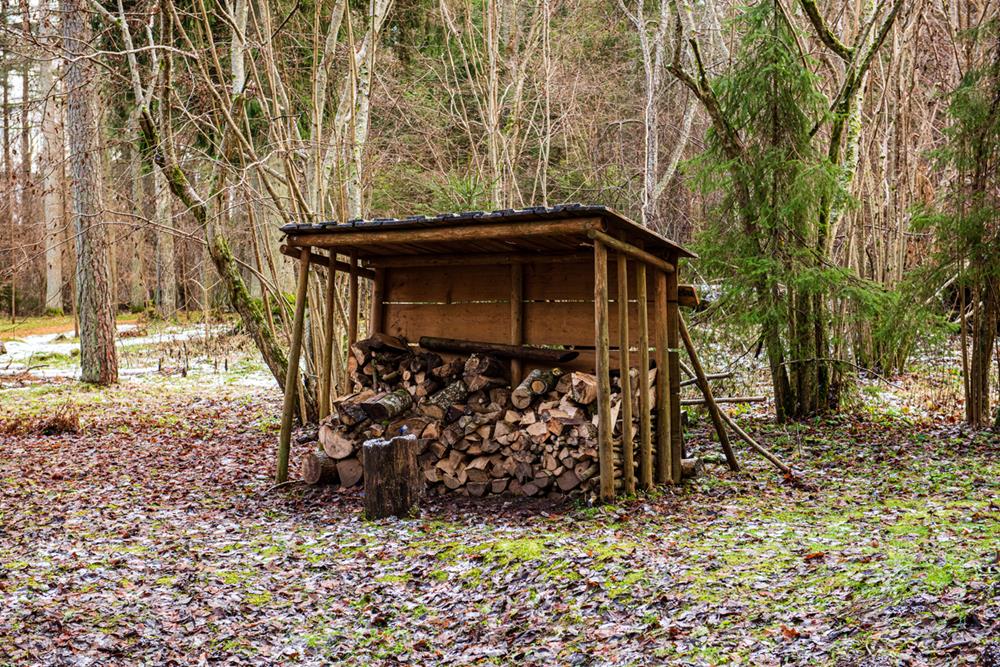Building a Bug-Free Survival Shelter: Tips for Keeping Pests Out

When you're focused on building a survival shelter, staying warm and dry might be your top priorities—but keeping bugs out is just as important. Insects like mosquitoes, ticks, ants, and flies can turn a safe haven into a miserable (and even dangerous) place.
Beyond the irritation of bites and stings, many bugs carry diseases that pose serious health risks—especially when medical help is limited. In this article, we’ll cover smart, practical strategies for building and maintaining a bug-free survival shelter.
| Category | Tips for Pest Prevention |
|---|---|
| Common Winter Pests | - Seal cracks and gaps in foundations, windows, and doors. - Store food securely to avoid attracting rodents. - Keep the shelter clean and inspect regularly. |
| Shelter Site Selection | - Choose a raised, well-drained location. - Avoid tall grass, stagnant water, and dense vegetation. - Use natural barriers and check for signs of pest activity. |
| Sealing Entry Points | - Use weather stripping, caulk, or steel wool to seal gaps. - Install door sweeps and maintain rooflines and eaves. - Conduct routine inspections for new openings. |
| Organizing and Cleaning | - Remove debris and food scraps regularly. - Store supplies in sealed containers. - Eliminate standing water and improve drainage. |
| Vegetation Management | - Trim trees and shrubs near the shelter. - Remove decaying plants and clear dense foliage. - Plant herbs like mint and lavender as natural repellents. |
| Firewood Storage | - Store firewood at least 20 feet from the shelter. - Elevate stacks on racks and cover with breathable material. - Inspect wood regularly for pest signs. |
| Natural Repellents & Traps | - Spray peppermint oil around entry points. - Use sugar-water traps for flies and mosquitoes. - Hang lavender or eucalyptus; burn smoky fires for insect deterrence. |
| Pest-Resistant Shelter Construction | - Build with thick natural materials to minimize gaps. - Elevate sleeping areas with platforms. - Maintain a small fire for smoke-based insect control. |
| Shelter Building Practice | - Practice using local materials and varying designs. - Work in teams to share skills and improve efficiency. - Build confidence to act quickly in emergencies. |
Understanding Common Winter Pests
While the cold months drive you indoors, they also encourage a variety of pests to seek warmth and shelter in your home. Common winter pests like rodents and spiders can quickly become unwelcome guests.
Rodents, such as mice and rats, are notorious for gnawing on wires and insulation, while spiders hide in undisturbed areas. To keep pests out, focus on pest prevention by regularly inspecting and sealing entry points. Cracks in foundations and gaps around windows provide easy access for these critters.
Rodents are particularly adept at finding food sources due to their keen sense of smell, so secure food and keep areas clean. In addition to sealing entry points, consider strategic safety measures to reinforce your home's defenses and prevent pest intrusion during the winter months.
Effective Shelter Site Selection

When selecting a site for your survival shelter, prioritize a raised and well-drained location to minimize flood risks and discourage insect breeding in stagnant water. Effective shelter site selection involves steering clear of areas with dense vegetation or tall grass, as these can harbor pests like mosquitoes and ticks.
You’ll want to choose a spot with natural barriers such as large rocks or fallen trees. These help deter pests and provide protection against the elements. Avoid sites exposed to prevailing winds, which can blow insects toward your shelter.
Always inspect for existing pest activity and steer clear of dead trees and branches—known as widowmakers—that pose hazards. Consider the availability of fertile land nearby to support self-sufficiency through gardening, ensuring your shelter location aligns with survival needs.
Sealing Entry Points to Prevent Pests
Having chosen an ideal site for your shelter, it's crucial to focus on sealing entry points to keep pests out.
Start by inspecting for cracks in the foundation, gaps around windows and doors, and openings around utility pipes. These are common entry points for pests. Use materials like weather stripping, caulk, or steel wool to effectively seal these openings and prevent pest infiltration.
- Install door sweeps at the bottom of doors to block rodents and insects.
- Regularly maintain rooflines and eaves, ensuring they're secure.
- Conduct routine inspections throughout the year to catch new entry points.
- Consider the importance of weather-resistant clothing to protect yourself from the elements while working on sealing your shelter.
Organizing and Cleaning the Shelter Area

To maintain a bug-free and comfortable survival shelter, start by organizing and cleaning the area thoroughly. Clear away debris, leaves, and excess foliage to minimize hiding spots for pests.
Regularly clean the shelter's interior by removing food scraps, dirt, and clutter, which attract bugs. Keep your gear and supplies organized in sealed containers to deter insects and rodents from food or shelter materials.
Regularly inspect the shelter area for standing water or dampness; these conditions can attract mosquitoes and other insects, so verify proper drainage.
Use natural repellents like crucial oils or smoke from a fire to create an extra barrier against pests.
Managing Outdoor Vegetation

Once you've organized and cleaned the shelter area, turn your attention to managing outdoor vegetation to further minimize pest issues.
Begin by regularly trimming tree branches and shrubs near your shelter. This natural method helps keep insects from using these as bridges to your living space.
Furthermore, inspect evergreens and other vegetation for signs of insect infestations. Prompt treatment is vital for effective pest control and to help reduce pest attraction.
- Remove dead or decaying plants to prevent them from becoming a good shelter for pests.
- Create a buffer zone by clearing dense foliage and keeping the ground free of debris.
- Plant herbs like mint and lavender around your shelter to naturally deter pests and create a less hospitable environment.
Proper Firewood Storage Techniques

When storing firewood, it's essential to prioritize proper techniques to prevent pest problems.
Initially, store firewood at least 20 feet from your home to keep bugs from finding easy entry indoors. Raise it on pallets or racks to encourage air flow and deter pests from nesting.
Cover your stack with a tarp or breathable material, protecting it from moisture while ensuring ventilation to prevent mold and insect attraction.
Regularly inspect firewood for signs of pests, like tunnels or droppings, so you can address issues early.
Avoid stacking firewood against your house or in sheltered spots, as this can invite pests closer to your home.
Utilizing Natural Repellents and Traps
Even though nature can be unpredictable, you can effectively manage pests around your survival shelter by using natural repellents and traps.
Start by mixing peppermint oil with water and spraying it around the entry points of your shelter. This creates a fragrant insect barrier that pests dislike. For personal protection, rub crushed leaves like mint or lemon balm on your skin.
Create a bug-free zone with these simple steps:
- Use sugar-water traps: Place them away from sleeping areas to attract and capture mosquitoes and fruit flies.
- Hang bug-repellent herbs: Lavender and eucalyptus bundles around your shelter deter pests while adding a pleasant aroma.
- Build a smoky fire: Use damp wood or green leaves to keep bugs at bay naturally.
These methods help maintain a bug-free environment.
Constructing a Pest-Resistant Shelter

Although nature is teeming with life, you can still construct a pest-resistant shelter with some strategic planning.
Initially, choose a site away from dense vegetation and standing water to reduce bug attraction. When you build a shelter, use natural materials like debris and branches to create thick walls, minimizing gaps that bugs could exploit.
Raise your sleeping area using logs or platforms, keeping it off the ground to avoid crawling insects and moisture. A smoke barrier can be effective too; build a small fire nearby to repel insects while providing warmth and a signal for help.
Don’t forget to regularly inspect your shelter for any signs of pest activity and seal any gaps or openings that may appear.
Importance of Practice in Shelter Building
Practicing shelter building is crucial for anyone looking to improve their survival skills. Regular practice not only improves your ability to construct effective shelters quickly but also elevates your confidence in unexpected situations.
When time is limited, having the expertise to make swift decisions can keep your home secure and comfortable.
- Practice sessions allow you to identify and utilize local materials effectively, boosting shelter stability.
- Repeatedly building shelters refines your techniques, helping you adapt designs to different environmental conditions.
- Teamwork during practice fosters shared knowledge, improving problem-solving and resource management skills.
Mastering shelter building through practice is key to efficient survival skills. You'll not only keep your home bug-free but also be prepared for emergencies with effective shelters at hand.




